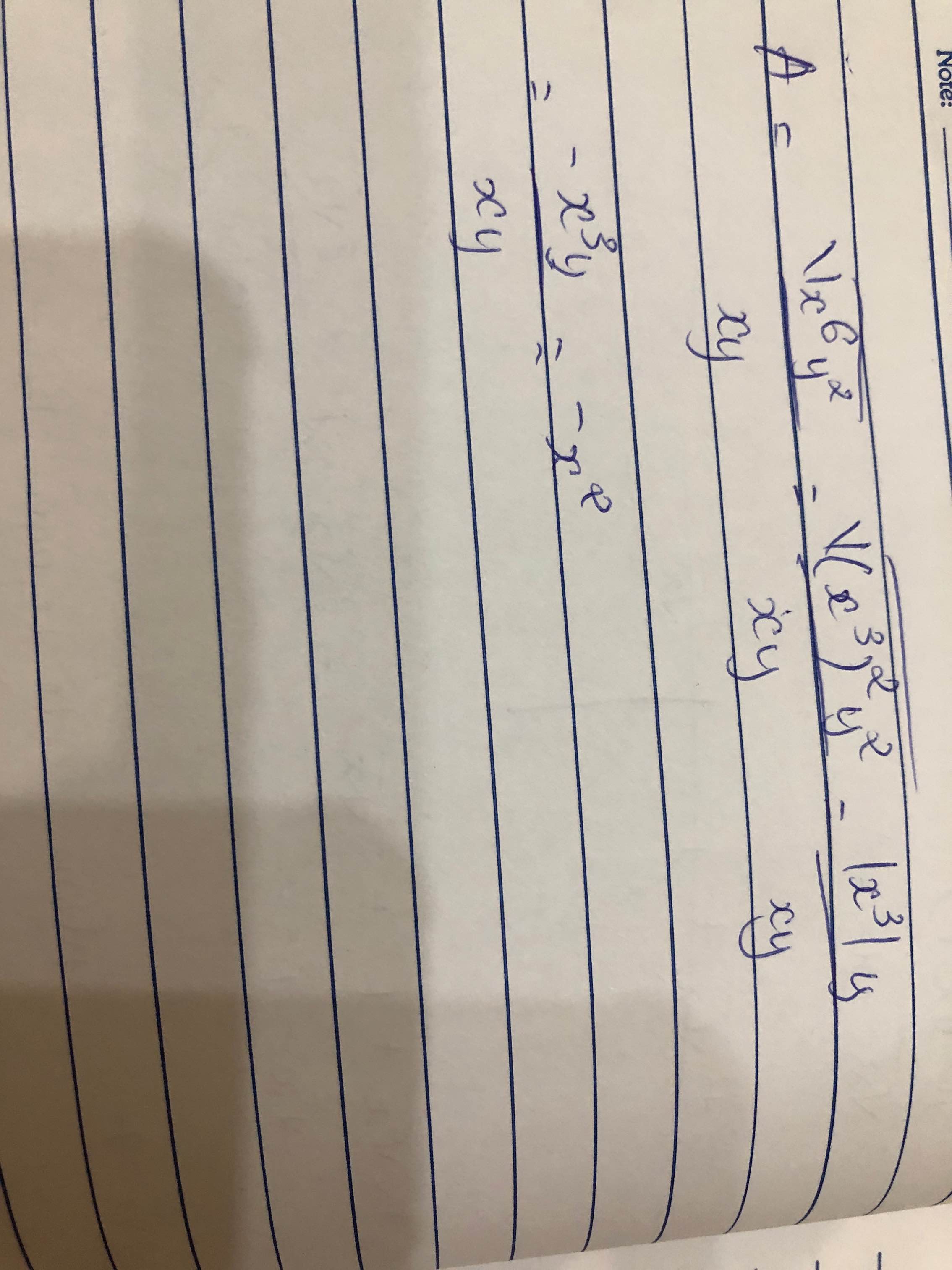
Hãy nhập câu hỏi của bạn vào đây, nếu là tài khoản VIP, bạn sẽ được ưu tiên trả lời.



a) \(M=\sqrt{4\left(x-1\right)}-\sqrt{9\left(x-1\right)}-\sqrt{16\left(x-1\right)}\)
\(=2\sqrt{x-1}-3\sqrt{x-1}-4\sqrt{x-1}=-5\sqrt{x-1}\)
b) \(N=\sqrt{25\left(y+4\right)}+\sqrt{36\left(y+4\right)}-2\sqrt{81\left(y+4\right)}\)
\(=5\sqrt{y+4}+6\sqrt{y+4}-18\sqrt{y+4}=-7\sqrt{y+4}\)
c) \(P=\sqrt{y-2}-3\sqrt{64\left(y-2\right)}+4\sqrt{49\left(y-2\right)}\)
\(=\sqrt{y-2}-24\sqrt{y-2}+28\sqrt{y-2}=5\sqrt{y-2}\)
a) \(M=\sqrt{4\left(x-1\right)}-\sqrt{9\left(x-1\right)}-\sqrt{16\left(x-1\right)}.\)
\(M=\sqrt{4\left(x-1\right)}-\sqrt{9\left(x-1\right)}-\sqrt{16\left(x-1\right)}\)
\(=2\sqrt{x-1}-3\sqrt{x-1}-4\sqrt{x-1}\)
\(=-5\sqrt{x-1}\)
b) \(N=\sqrt{25\left(y+4\right)}+\sqrt{36\left(y+4\right)}-2\sqrt{81\left(y+4\right)}\)
\(N=\sqrt{25\left(y+4\right)}+\sqrt{36\left(y+4\right)}-2\sqrt{81\left(y+4\right)}\)
\(=5\sqrt{y+4}+6\sqrt{y+4}\)
\(=-7\sqrt{y+4}\)
c) \(P=\sqrt{\left(y-2\right)}-3\sqrt{64\left(y-2\right)}+4\sqrt{49\left(y-2\right)}\)
\(P=\sqrt{\left(y-2\right)}-3\sqrt{64\left(y-2\right)}+4\sqrt{49\left(y-2\right)}\)
\(=\sqrt{y-2}-24\sqrt{y-2}+28\sqrt{y-2}\)
\(=5\sqrt{y-2}\)

\(a,\frac{\sqrt{108x^3}}{\sqrt{12x}}=\frac{\sqrt{36.3.x^3}}{\sqrt{3.4.x}}=\frac{6\sqrt{3}.\sqrt{x}^3}{2\sqrt{3}.\sqrt{x}}=3\sqrt{x}^2=3x\)
\(b,\frac{\sqrt{13x^4y^6}}{\sqrt{208x^6y^6}}=\frac{\sqrt{13}.\sqrt{x^4}.\sqrt{y^6}}{\sqrt{16.13}.\sqrt{x^6}.\sqrt{y^6}}=\frac{\sqrt{13}.x^2y^3}{4\sqrt{13}x^3y^3}=\frac{1}{4x}\)
\(c,\frac{x\sqrt{x}+y\sqrt{y}}{\sqrt{x}+\sqrt{y}}-\left(\sqrt{x}+\sqrt{y}\right)^2\)
\(=\frac{\sqrt{x}^3+\sqrt{y}^3}{\sqrt{x}+\sqrt{y}}-\left(x+2\sqrt{xy}+y\right)\)
\(=\frac{\left(\sqrt{x}+\sqrt{y}\right)\left(x-\sqrt{xy}+y\right)}{\sqrt{x}+\sqrt{y}}-x-2\sqrt{xy}-y\)
\(=x-\sqrt{xy}+y-x-2\sqrt{xy}-y=-3\sqrt{xy}\)
\(d,\sqrt{\frac{x-2\sqrt{x}+1}{x+2\sqrt{x}+1}}=\frac{\sqrt{\left(\sqrt{x}-1\right)^2}}{\sqrt{\left(\sqrt{x}+1\right)^2}}=\frac{\sqrt{x}-1}{\sqrt{x}+1}\)
Đk chỗ này là \(\sqrt{x}-1\ge0\Rightarrow\sqrt{x}\ge\sqrt{1}\Rightarrow x\ge1\)nhé
\(e,\frac{x-1}{\sqrt{y}-1}.\sqrt{\frac{\left(y-2\sqrt{y}+1\right)^2}{\left(x-1\right)^4}}=\frac{x-1}{\sqrt{y}-1}.\frac{y-2\sqrt{y}+1}{\left(x-1\right)^2}\)
\(=\frac{\left(x-1\right)\left(\sqrt{y}-1\right)^2}{\left(\sqrt{y}-1\right)\left(x-1\right)^2}=\frac{\sqrt{y}-1}{x-1}\)
1) Viết biểu thức sau đưới dạng hiệu 2 bình phương:
a)4x2+6x+7-y2-6y
b)x2+y2-4x-6y+13
c)4x2-12x-y2+2y+8

\(x^2+y^2-4x-6y+13\)
\(=\left(x^2-4x+4\right)+\left(y^2-6y+9\right)\)
\(=\left(x-2\right)^2+\left(y-3\right)^2\)
hk
tốt...

a: Thay x=16 vào A, ta được:
\(A=\dfrac{2\cdot4}{4+3}=\dfrac{8}{7}\)
